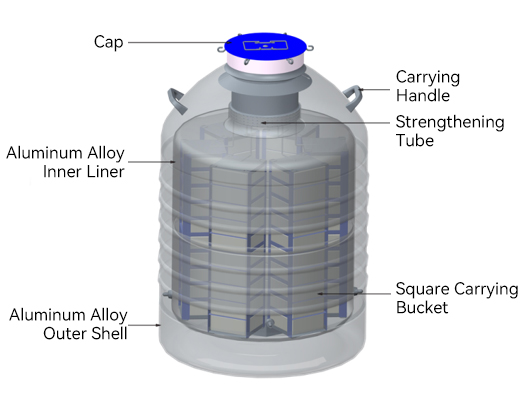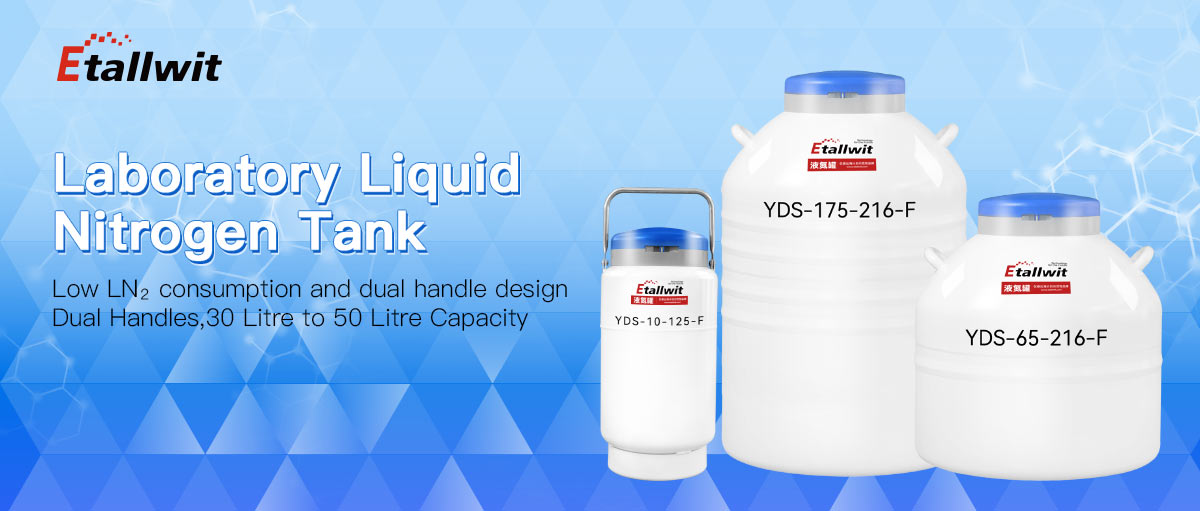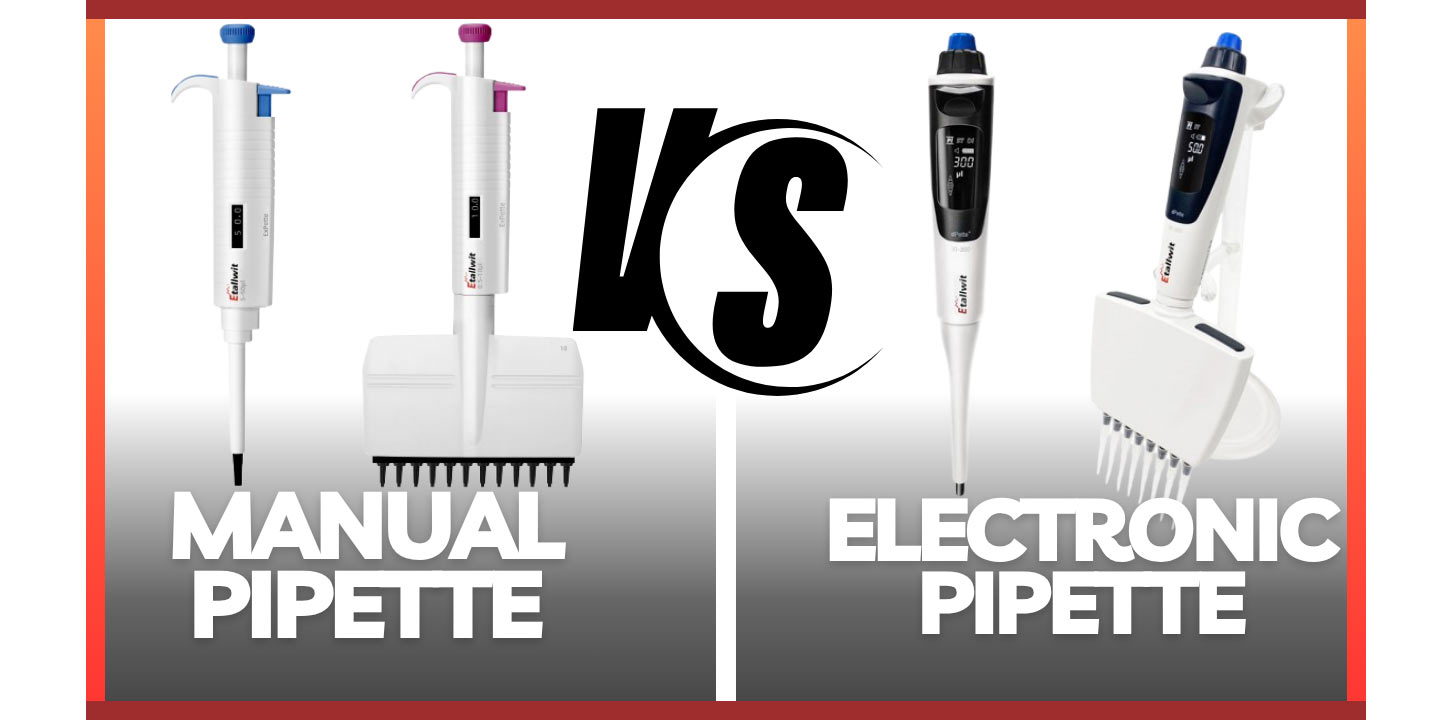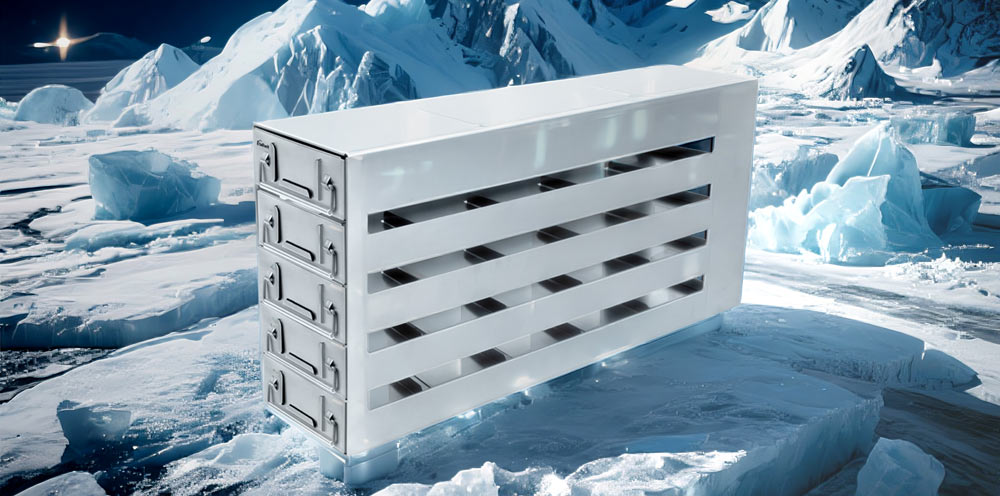In scientific research and medical labs, liquid nitrogen tanks are indispensable for storing samples at ultra-low temperatures. But how do you choose the right one? And how do you ensure safe, effective usage? This comprehensive guide helps answer all those questions!
Liquid nitrogen tanks, officially known as cryogenic storage containers, are designed to store biological samples, cells, vaccines, and other materials at ultra-low temperatures. Made primarily from aluminum alloys, they combine low nitrogen consumption with high storage efficiency. These tanks are widely used in laboratories, research institutes, and medical facilities around the world.

How to Choose the Right Liquid Nitrogen Tank?
When selecting a liquid nitrogen tank, it’s crucial to consider factors like capacity, material, and safety features to ensure it meets your laboratory’s needs while maintaining safety.
1. Capacity Selection
Choosing the right capacity is essential. A tank that is too large can waste space and increase costs, while one that is too small might not meet your storage requirements. For example, small labs can opt for a compact tank, while high-throughput experiments may require larger tanks.
2. Material Requirements
Ensure that the tank body is made from high-strength aluminum alloys or high-quality stainless steel, with excellent low-temperature performance and impact resistance. The interior should also use multi-layer insulation and vacuum technology to minimize nitrogen loss and extend the cooling time.
3. Safety Features
A good-quality liquid nitrogen tank should be equipped with multiple safety features, such as pressure release valves, explosion-proof designs, and a secure tank structure to ensure safety in low-temperature environments. Some models also offer locking mechanisms for added sample storage security.
4. Additional Features
Modern tanks may come with intelligent monitoring systems, such as smart caps that monitor nitrogen levels, temperature, and provide remote alarms. These features not only enhance ease of use but also offer better safety for sample storage.
5. After-Sales Service
Choose a brand with a robust after-sales service system. Etallwit offers 24/7 nationwide support, ensuring peace of mind and uninterrupted operation.

How to Safely Use Liquid Nitrogen Tanks?
Before using the liquid nitrogen tank, ensure that it is clean and inspect the tank for any damage. Always wear protective equipment such as gloves and face shields. Open the tank valve slowly and pour the nitrogen gradually to avoid splashing. When storing samples, ensure they are placed in dedicated storage containers, fully immersed in nitrogen. If the nitrogen level drops to one-third, replenish it promptly to maintain temperature stability.
Important Usage Tips
Pre-Use Inspection
Before filling with liquid nitrogen, check for any dents or damages. Ensure that the vacuum vent is intact. If the vacuum is compromised, nitrogen evaporation will increase and affect the tank’s efficiency.
Filling Liquid Nitrogen
When filling a new or dry tank, do so slowly and pre-cool the tank to prevent damage from rapid cooling. Avoid pouring nitrogen into the vacuum vent as it may affect the vacuum performance.
Storage & Transportation
Liquid nitrogen tanks should remain stable during use and transport. Always secure the tank in a transport version designed for safe handling during transit. When transporting, ensure the tank is tightly secured to prevent unnecessary loss of nitrogen.
Regular Inspections
Regularly inspect the tank. If you notice frosting or uneven temperature, cease operation and address the issue. Do not scrape off frost with a tool, let it melt naturally to avoid damaging the tank.
Storage and Placement
Store liquid nitrogen tanks in a well-ventilated, shaded area. Ensure the tank remains upright and avoid tilting or stacking to prevent damage and extend the tank's lifespan.
Cleaning & Maintenance
Clean the tank when not in use, especially after the nitrogen has evaporated. Use warm water and a neutral detergent, then dry thoroughly before storage. This will prevent residual materials from affecting the tank’s performance.
By following these guidelines, you can extend the life of your liquid nitrogen tank and enhance the safety and reliability of your laboratory operations.
Looking for the Best Liquid Nitrogen Tank for Your Lab?
Contact Etallwit today to explore our high-quality liquid nitrogen tanks that offer reliability, safety, and innovative features. Experience secure and efficient storage solutions for your sensitive samples.
Contact us for more information or to schedule a consultation with our expert team!



